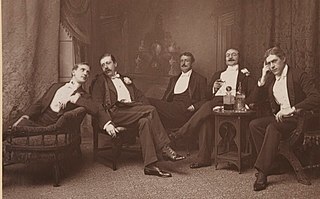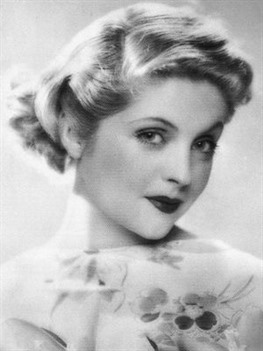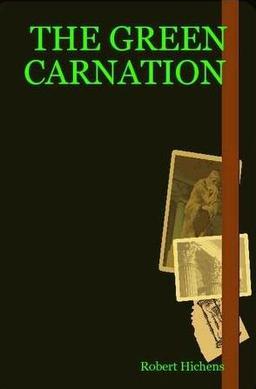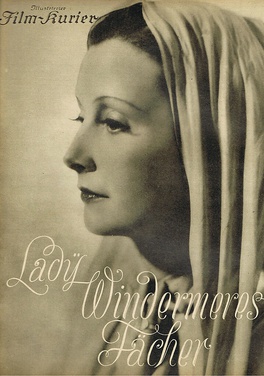
The Importance of Being Earnest, a Trivial Comedy for Serious People is a play by Oscar Wilde, the last of his four drawing-room plays, following Lady Windermere's Fan (1892), A Woman of No Importance (1893) and An Ideal Husband (1895). First performed on 14 February 1895 at the St James's Theatre in London, it is a farcical comedy depicting the tangled affairs of two young men about town who lead double lives to evade unwanted social obligations, both assuming the name Ernest while wooing the two young women of their affections.

The Picture of Dorian Gray is a philosophical fiction and gothic horror novel by Irish writer Oscar Wilde. A shorter novella-length version was published in the July 1890 issue of the American periodical Lippincott's Monthly Magazine. The novel-length version was published in April 1891. It is regarded as a classic of Gothic literature and has been adapted for films and stage performances.

Lady Windermere's Fan, A Play About a Good Woman is a four-act comedy by Oscar Wilde, first performed on Saturday, 20 February 1892, at the St James's Theatre in London.

An Ideal Husband is a four-act play by Oscar Wilde that revolves around blackmail and political corruption, and touches on the themes of public and private honour. It was first produced at the Haymarket Theatre, London in 1895 and ran for 124 performances. It has been revived in many theatre productions and adapted for the cinema, radio and television.

Salome is a one-act tragedy by Oscar Wilde. The original version of the play was first published in French in 1893; an English translation was published a year later. The play depicts the attempted seduction of Jokanaan by Salome, stepdaughter of Herod Antipas; her dance of the seven veils; the execution of Jokanaan at Salome's instigation; and her death on Herod's orders.

Wilde is a 1997 British biographical romantic drama film directed by Brian Gilbert. The screenplay, written by Julian Mitchell, is based on Richard Ellmann's 1987 biography of Oscar Wilde. It stars Stephen Fry in the title role, with Jude Law, Vanessa Redgrave, Jennifer Ehle, Gemma Jones, Judy Parfitt, Michael Sheen, Zoë Wanamaker, and Tom Wilkinson in supporting roles.

Dorothy Hyson, Lady Quayle was an American-born film and stage actress who worked largely in England. During World War II, she worked as a cryptographer at Bletchley Park.

The Green Carnation is a novel by Robert Hichens that was first published anonymously in 1894. A satire on contemporary champions of the Aesthetic Movement, it was withdrawn briefly after the scandal of the Oscar Wilde trial in the following year. Later printings followed and it has remained popular for its depiction of the witty personalities of the time.
Laura Rees is a British actress from Northampton.

Story of a Bad Woman is a 1948 Argentine drama film directed by Luis Saslavsky and starring the Mexican and Hollywood superstar Dolores del Río, María Duval, Alberto Closas. It is based on the 1892 Oscar Wilde play Lady Windermere's Fan. The film's art direction was by Raúl Soldi. It was made by Argentina Sono Film, one of the country's biggest studios during the era.

The Fan is a 1949 American drama film directed by Otto Preminger, starring Jeanne Crain, Madeleine Carroll, George Sanders, and Richard Greene. The screenplay by Dorothy Parker, Walter Reisch, and Ross Evans is based on the 1892 play Lady Windermere's Fan by Oscar Wilde. The play had been filmed several times before, with a 1916 silent film, a later adaptation by Ernst Lubitsch in 1925 as well as versions in Spanish and Chinese.

After the Ball is a musical by Noël Coward based on the 1892 play by Oscar Wilde, Lady Windermere's Fan.

Lady Windermere's Fan is a 1944 Mexican drama film directed by Juan José Ortega and starring Susana Guízar, Anita Blanch and René Cardona. The film's sets were designed by the art director Ramón Rodríguez Granada. It is based on the 1892 play Lady Windermere's Fan by Oscar Wilde.

The Ware Case is a 1938 British drama film directed by Robert Stevenson and starring Clive Brook, Jane Baxter and Barry K. Barnes. It is an adaptation of the play The Ware Case (1915) by George Pleydell Bancroft, which had previously been made into two silent films, in 1917 and 1928. It had been a celebrated stage vehicle for Sir Gerald Du Maurier. The film was made at Ealing Studios with stately home exteriors shot in the grounds of Pinewood. Oscar Friedrich Werndorff worked as set designer.

Lady Windermere's Fan is a 1925 American silent drama film directed by Ernst Lubitsch. It is based on Oscar Wilde's 1892 play Lady Windermere's Fan which was first played in America by Julia Arthur as Lady Windermere and Maurice Barrymore as Lord Darlington. The film is being preserved by several archives. It was transferred onto 16mm film by Associated Artists Productions in the 1950s and shown on television. In 2002, Lady Windermere's Fan was selected for preservation in the United States National Film Registry by the Library of Congress, being deemed "culturally, historically, or aesthetically significant."

Lady Windermere's Fan is a 1935 German comedy film directed by Heinz Hilpert and starring Lil Dagover, Walter Rilla and Aribert Wäscher. It is based on the play Lady Windermere's Fan by Oscar Wilde. The film's sets were designed by the art directors Heinrich Beisenherz and Ludwig Reiber.

Nevenka Urbanova was one of the most famous Serbian actresses.

Lady Windermere's Fan is a 1916 British silent comedy film directed by Fred Paul and starring Milton Rosmer, Netta Westcott and Nigel Playfair. It was the first film adaptation of Oscar Wilde's 1892 play Lady Windermere's Fan. A print of the film still exists and it has been released on DVD by the British Film Institute.

Francesca Coppa is an American scholar whose research has encompassed British drama, performance studies and fan studies. In English literature, she is known for her work on the British writer Joe Orton; she edited several of his early novels and plays for their first publication in 1998–99, more than thirty years after his murder, and compiled an essay collection, Joe Orton: A Casebook (2003). She has also published on Oscar Wilde. In the fan-studies field, Coppa is known for documenting the history of media fandom and, in particular, of fanvids, a type of fan-made video. She co-founded the Organization for Transformative Works in 2007, originated the idea of interpreting fan fiction as performance, and in 2017, published the first collection of fan fiction designed for teaching purposes. As of 2021, Coppa is a professor of English at Muhlenberg College, Pennsylvania.

Lina Munte was a French actress. She had a successful career in Paris and St Petersburg, but was forced to retire in her fifties because of illness. Among the roles she created was the title role in Oscar Wilde's Salomé (1896) and characters in new plays by Catulle Mendès, Émile Zola, Émile Erckmann, Alexandre Chatrian and Georges Ohnet.



















